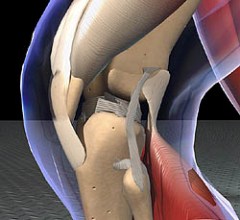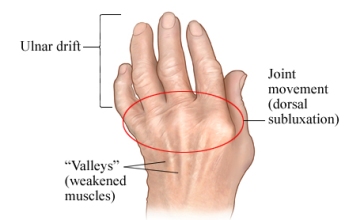Many people with a chronic problem of rheumatoid arthritis know only too well that they cannot stay without using formulas to check the progress of this debilitating disease. Yet they also respect the wisdom of using natural remedies. Natural solutions have the ability to draw from nature the beauty and soothing quality of its elements. They come unchanged and have no side effects, which is more than can be said about pharmaceutical products.
Before we look at a few of these remedies, let us see what we are avoiding in pharmaceutical products. After all, someone could ask what it is we are afraid of in these other products.
The matter is rather simple. Take aspirin for example. It is a very good reliever of pain and it even calms down swelling of joints in rheumatoid arthritis. You could ask why with such a pain killer of world repute and with an equally strong anti-inflammatory effect should have to worry anybody. It is true. It will not cause heart trouble of mess up lung tissue like some of the steroid based medicines. But with continued use, it will cause you bleeding in the gastrointestinal region.
So, do you still want to know what is on offer naturally?
– The Devil’s claw: so called from the appearance of hooks on the fruit of this plant, it has been used for longer than Christianity has existed. The people of South Africa have used it to treat rheumatoid arthritis, pancreas trouble, skin conditions and even fever. It has been proven to contain harpagosides and the painkilling ingredient, vioxx.
– Fatty acids (the omega-3): our bodies are not producers of omega-3 fatty acids but they need it. There have been studies to test the validity of the claim that these have any assistance to offer the rheumatoid arthritis patient. From salmon fish and other cold water fish, they are found in oil and have a way of dissuading persistent swelling. Since most fish now have traces of mercury, you can obtain your supply of omega -3 fatty acids in oil extracted, screened for chemicals and packed as capsules.
– Boswellia: the herb is a native of India and it is acidic in component structure. It works as an inhibitor to swelling. What’s more, it brings on no irritation. It has been packaged as a pill now which should be easy to obtain and use. The extended use of this by rheumatoid arthritis patients should be abserved by a doctor.
– Gamma-linolenic acid: this one is found to be contained in borage oil, evening (primose) oils and black currant seed oil. It works like omega-3 fatty acids as an anti-inflammatory.
When you choose your medication, remember to consider your age, extent of joint damage and whether other treatments have worked before.
Look at the following tips and build on your knowledge of this disease.
1. There a more than 100 types of this illness. In occurrence, a single variety can probably be called a single disease. These related conditions are diagnosed as different and treated as such. The most similar thing with all is that it affects joints and the areas surrounding the joints. At risk is cartilage that prevents bones from rubbing against each other. Other varieties afflict the muscle and soft tissue too.
2. Arthritis cannot be cured; it can be managed. With this in mind, we can begin to understand its various treatments and what they do. At this point, let us get it clearly that the best a treatment formula can do for you is reduce the amount of pain, calm down the inflammation around joints and slow down the progress of this disease.
3. The only expert who should handle your case should be a rheumatologist. Such a doctor’s expertise is in arthritis and they understand it better, have probably treated it before and have a more truthful picture of the reality this disease is.
4. It is possible to be limited by the effects of this disease in your functions on a daily basis. You might not be able to walk well, bend over, stoop or do stairs. Your productive hours of work might be reduced by attacks of deep pain. It is important that you begin to understand this and make provisions for it. you can relinquish some of your responsibilities at work or assign duties you used to perform to other members of the family.
5. It cost to treat arthritis. Even when you strive to keep your treatment of this chronic illness natural, you are only lowering the cost. Herbs and supplements cost and you cannot postpone buying them like you would do with a new shirt. Healthy eating can also cost you a little. What is important to know is that everything costs. What matters is to make it worthwhile.
6. Emotionally, there can be a strain. Before spouses begin to understanding that arthritis will not go away, it might take some time and some emotional strain. You are also bound to be shocked at the discovery, so be ready for it.
7. An early diagnosis is probably the best thing that can happen to a sufferer of this disease. It is possible to slow it in its early stages and lead a normal life. This way, it gives you the best opportunity to fight it.
8. As people are different, treatments favour some and not others. It will take time before you land the formula that works for you. Stay on the experimental path and stay optimistic. Patience will eventually pay.
Stay in the know and you will be a step before arthritis. That way it will be struggling to bring you down, not you struggling to stay abreast with it.

